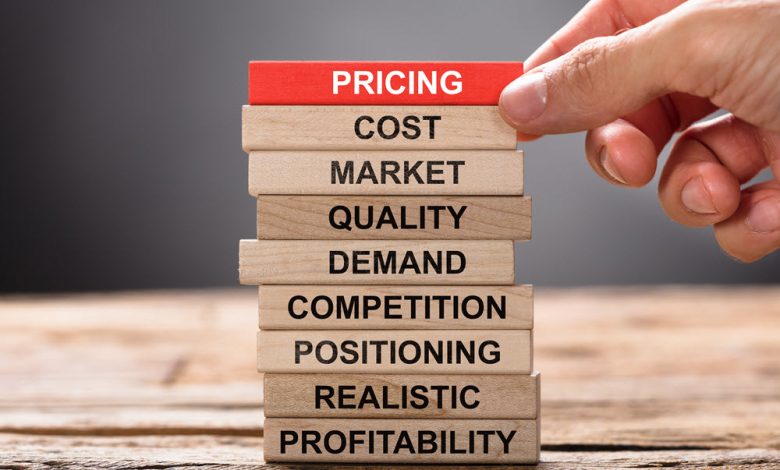Competitive Pricing: How One Mistake Cost Niola a Business Deal
How undervaluing your work can ruin opportunities – and what entrepreneurs must learn about price perception.

In the world of business, competitive pricing is not just about being affordable; it’s about sending the right signal to your audience. Many entrepreneurs believe that pricing low makes them look humble or honest, but in reality, it might make them appear unsure, inexperienced, or even unqualified.
One of the grievous mistakes entrepreneurs make is focusing so much on marketing and product development while pricing becomes an afterthought. But here’s a truth: the price you attach to your product will determine the kind of customer that your business will attract; it will determine how your audience perceives your brand.
By implication, this means that even if your product is premium and you intend to serve a particular target audience in the marketplace, your pricing can skew you if it does not meet the expectations of your target audience. Do you know that one of the reasons people buy is to enhance their self-perception? And that means that such a person would never buy a product that is below the self-perception he/she wants to hold.
Let’s take a look at Niola’s story, a talented product designer who lost a career-changing opportunity, not because she lacked the skill, but because she didn’t understand how competitive pricing works.
Niola’s Story
Niola is a product designer with seven years of experience who knows everything about her work. She used to get good gigs, but there was a particular design project that could have tripled her efforts and brought her into a new dimension.
A big client reached out to work with her on a design project. The client was ready to pay any amount so far the work would be done just the way the client wanted. Niola and her client had several “talking stages” just to ensure that she understood the nature of the job, and in a few days, they were good.
The next step was for Niola to name her price. The client expected a high rate because part of the job required her to go to the site to check and confirm the dimensions and other things.
So, the client had calculated her inconvenience but this is where Niola couldn’t get the job. She only calculated for the work, appearing to be “honest.” The client was taken aback by the price because it was below her expectations, hence she cancelled the project without questions.
On the part of the client, the client felt she wasn’t capable of doing the job because of all the other designers, Niola’s pricing was the cheapest and it felt weird.
What is Competitive Pricing?
Competitive pricing involves setting your product or service prices based on what competitors are charging. It doesn’t necessarily mean you are adopting their exact pricing strategies, rather it means understanding the pricing landscape and positioning your offer strategically within it.
Importance of Competitive Pricing
1. It helps businesses attract price-sensitive customers
2. It allows you to remain relevant in a saturated market
3. It builds trust, especially when your price aligns with the value you deliver
4. It allows for easy scalability while staying profitable
Factors to Consider When Setting Prices
Before you set the price for your product or service, you need to consider some key factors as well as understand what your customers perceive as value and how your business stays profitable.
1. Cost of production or service delivery
Before you set your price, it must at least, cover the cost of producing the product or service you are delivering. This cost includes but is not limited to raw materials, labour, packaging, shipping, and even overhead expenses like rent, electricity, and software subscriptions.
2. Competitor Pricing Analysis
Another way to set your price is to look at what your competitors are charging. This will give you a clue on what price to set in order not to overprice or underprice your product or service. However, you need to be careful not to be deceived by their price, instead, you need to study carefully what value they’re offering in return.
A good way to achieve this is to google search, do customer reviews, conduct price comparison sites, or even shop anonymously from competitors.
3. Customer Purchasing Power and Behaviour
Who is your ideal customer? What can they afford to pay? What do they value most – price, speed, quality, customer support, or all of the above? Getting answers to these will help you price with intention.
If Niola had known and understood her client’s purchasing power and behaviour, she wouldn’t have undercharged for the project. It’s not enough for you to consider the cost of production, you must understand the ability of your customer to buy your product with the price set for it. Do they equate price with perceived value? Do “cheap” prices signal low value?
These and more are what you need to understand before setting your price. Some potential customers will never patronise you because of your price. It could be either too low for them or too high for them. All these will work in your favour if you as a business person, would understand their purchasing power and what they perceived to be of value.
4. Perceived Value
It is possible that two businesses can sell the same product or service and both are successful. Why? This is because they understand that pricing is a psychological game.
You just need to understand who your ideal customer is and what they perceive as value, then you will be able to tailor your pricing in that direction.
In the case of Niola’s client, the client was price-sensitive, which hindered Niola from getting the gig. The higher the perceived value, the more people are willing to pay. This includes packaging, branding, testimonials, and even user experience.
5. Business goals
Knowing what you intend to achieve in the marketplace determines how to set your price. Are you aiming for high volume or premium positioning?
Is your goal on short-term market entry or long-term brand equity? Your goals will determine whether you use aggressive pricing or adopt a value-based model.
Conclusion
Niola’s story is a cautionary story for every entrepreneur, and business owner. No matter how skilled or experienced you are, if your pricing doesn’t reflect the value you offer, you risk being overlooked, especially by the very clients who can change your business trajectory.
Competitive pricing isn’t about being the cheapest on the block; it’s about striking a balance between value, market standards, and the expectations of your target audience. It’s about confidence. It’s about perception. And most importantly, it’s about strategy.
As you grow your business, don’t let pricing be an afterthought. Take time to understand your audience, study your competitors, and price with intention. Because in the end, the number you place on your product or service is not just a figure; it’s a statement of your worth. And your ideal customer is listening.
Read Related Posts: Stephen Akintayo’s $18K Mentorship: Business Lessons Learned




